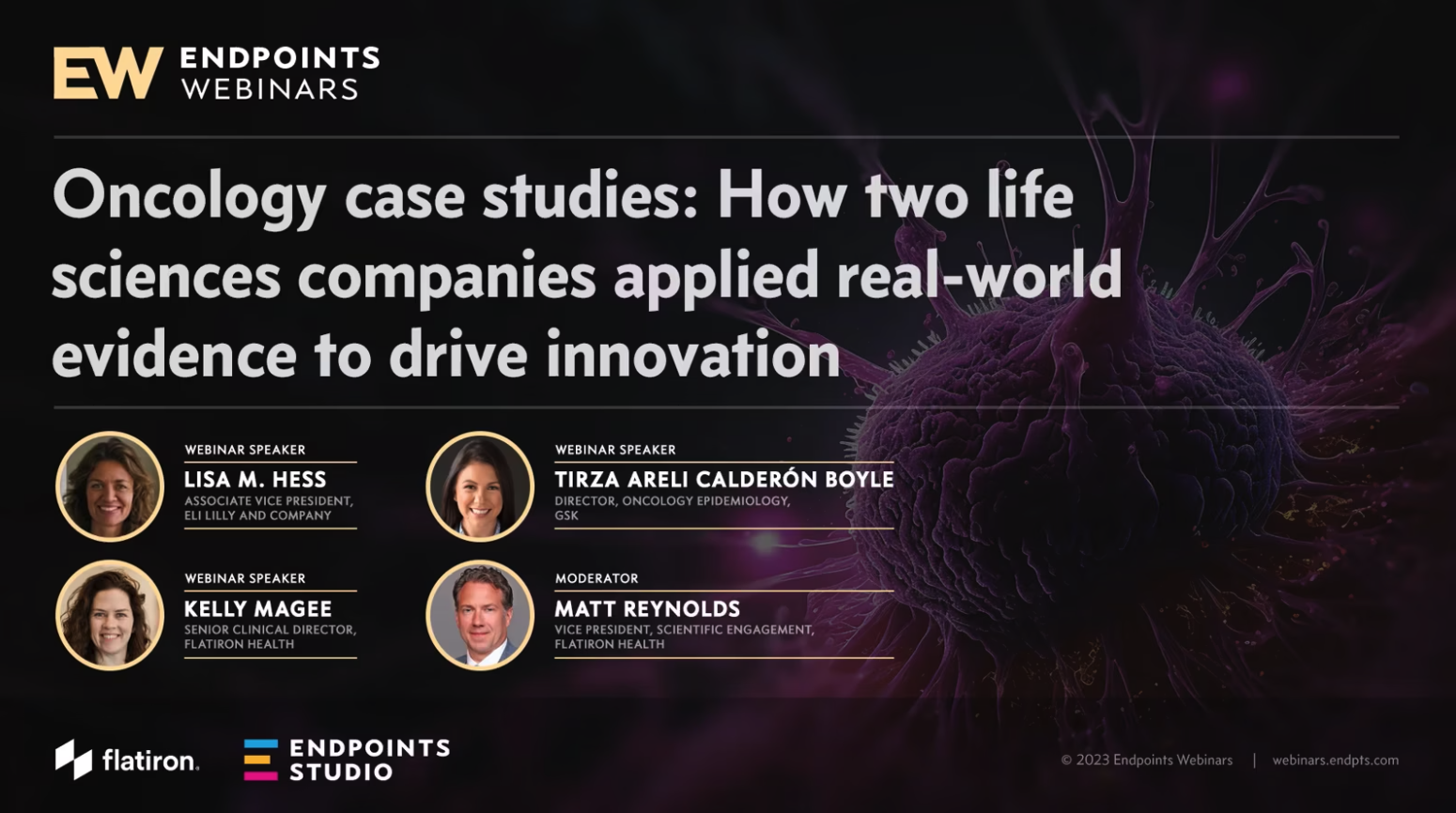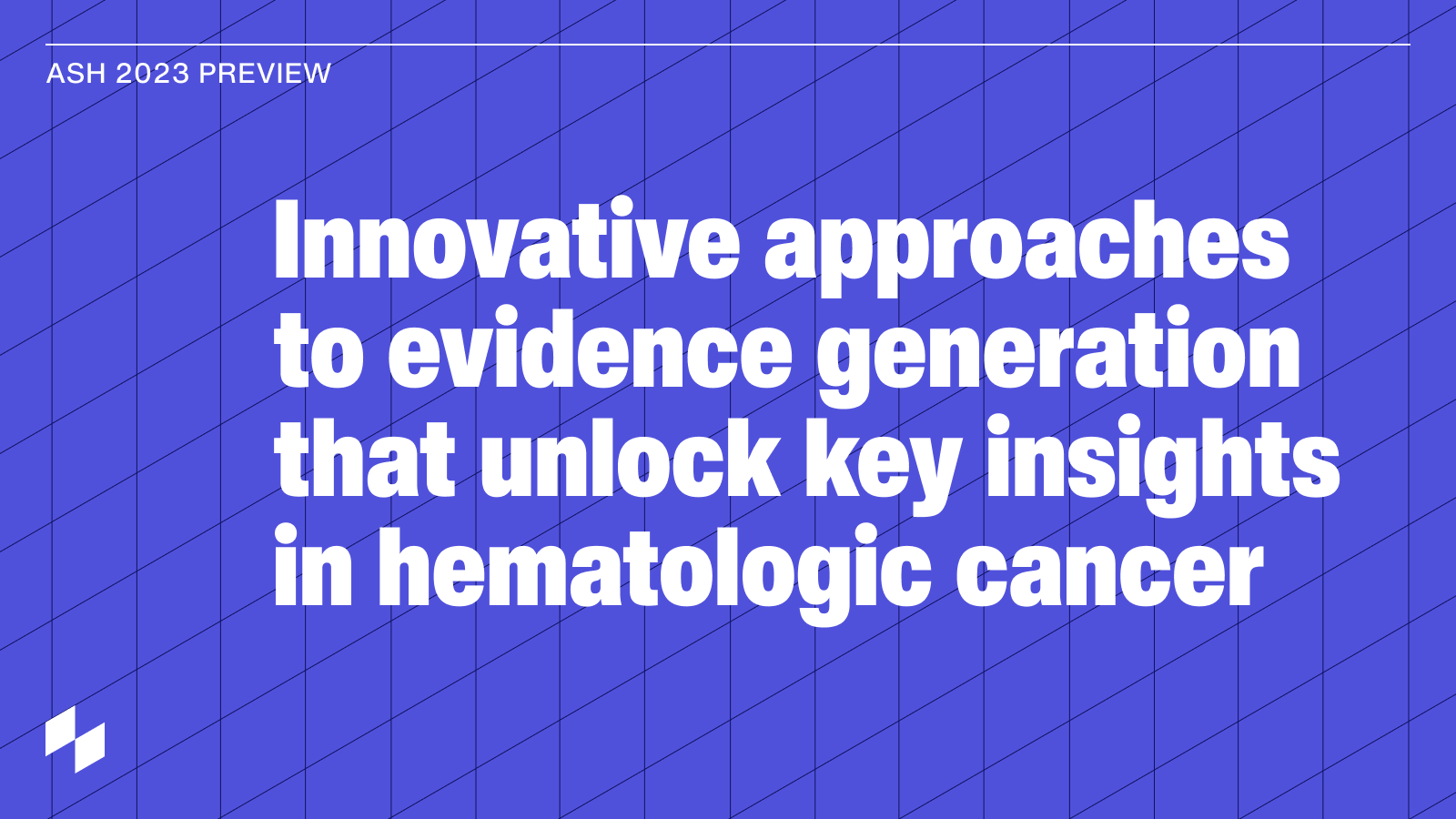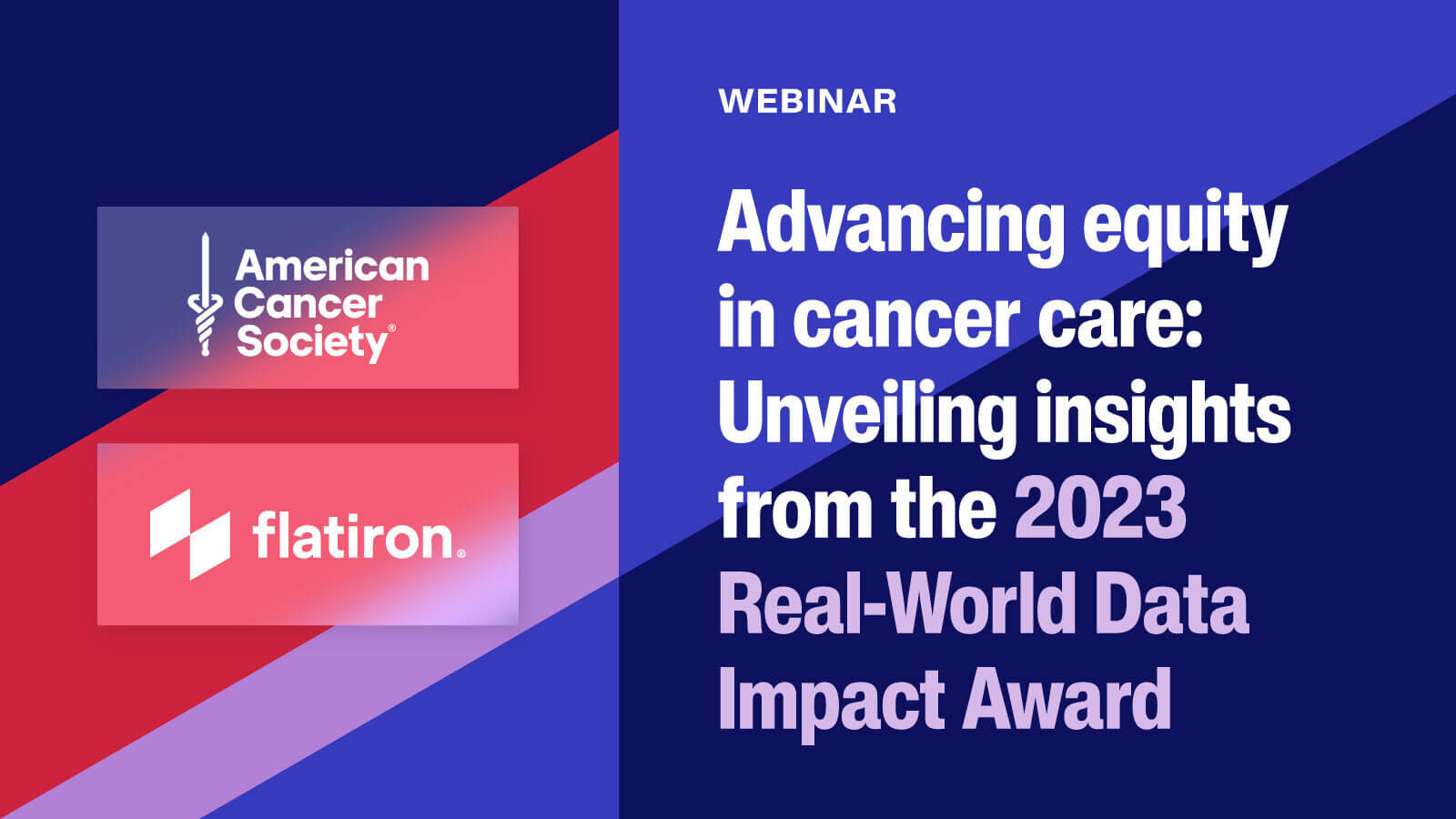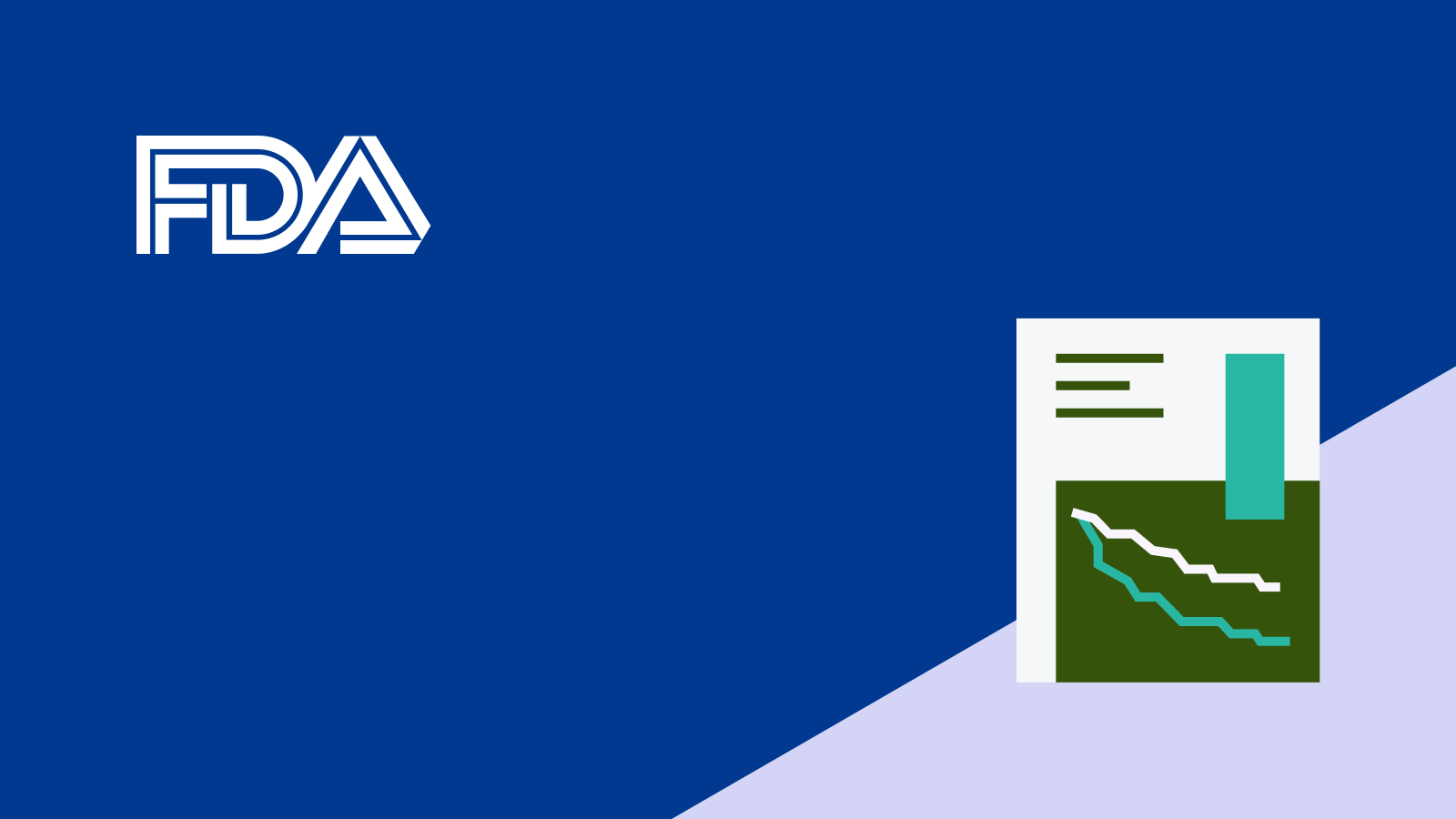Oncology real-world data and evidence (RWD/E) can be used across the entire product life cycle, from clinical research and development to launch and post-marketing.
In this webinar, experts from Flatiron Health, Eli Lilly, and GSK:
-
Highlight how RWE was leveraged to understand unmet need and treatment patterns to support FDA accelerated approval of a new drug for mantle cell lymphoma
-
Demonstrate the impact of RWE in assessing real-world outcomes and comparative effectiveness post drug launch for patients with recurrent ovarian cancer
-
Discuss industry perspectives on applications, innovations, and the impact of RWE

Case Study #1: A retrospective electronic health record-derived study supporting the accelerated approval of a new drug for mantle cell lymphoma in the U.S.
In the first case study, Dr. Lisa Hess, Associate Vice President at Eli Lilly, presents a retrospective study that assessed unmet need and treatment patterns in patients with mantle cell lymphoma (MCL). This was a space with little guidance in NCCN guidelines or elsewhere on appropriate patient care after initial covalent BTKi (cBTKi) therapy.
In the study, Dr. Hess and team used Flatiron Health’s de-identified electronic health record derived data, specifically looking at a cohort of patients who had received a cBTKi treatment. They found 1,150 eligible patients, and their demographic makeup (age, gender, race, ethnicity) and care sites (77% community practices) were consistent with what is typically observed among patients with MCL. Outcomes of interest included duration of therapy, time to next treatment failure and overall survival.
The team found:
-
Considerable heterogeneity in treatments immediately post-cBTKi
-
Median time to next treatment, failure or death after the discontinuation of the cBTKi was 3.0 months
-
Median overall survival from the start of the immediate next post-cBTKi therapy was 13.2 months
This study demonstrated poor outcomes for patients post-cBTKi therapy and quantified an important unmet need. Ultimately, Eli Lilly submitted and successfully obtained accelerated approval of pirtobrutinib for use among patients with relapsed/refractory MCL after two lines of therapy, including a cBTKi.
Case Study #2: Real-world clinical outcomes and comparative effectiveness of a drug in patients with recurrent ovarian cancer in the U.S.
In the second case study, Dr. Tirza Boyle, Director of Oncology Epidemiology at GSK, presents real-world overall survival and comparative effectiveness for niraparib, a PARP inhibitor approved by the FDA in March 2017 as maintenance monotherapy for patients with recurrent ovarian cancer. Patients with advanced ovarian cancer often relapse and require multiple lines of chemotherapy, with survival decreasing with each subsequent line of therapy.
Based on the findings of the randomized controlled Phase 3 clinical trial, NOVA, the drug demonstrated statistically significant improvement of progression-free survival in patients who received niraparib compared to placebo regardless of their biomarker status. In this new study, Dr. Boyle and team set out to compare the overall survival of BRCA wild-type (wt) patients with recurrent ovarian cancer treated with second line maintenance niraparib monotherapy versus patients who were only under active surveillance, and conducted a subgroup analysis in a cohort of patients with characteristics similar to those recruited in the NOVA clinical trial.
They used Flatiron Health RWD to find 1,172 eligible patients and employed robust methodologies to minimize potential differences in patient characteristics.
In the outcomes analysis, the team found that:
-
In the overall cohort, the observed median overall survival was 24.1 months for patients receiving niraparib and 18.4 months for those receiving active surveillance
-
In the NOVA study-like cohort, the observed median overall survival was 28.1 months for patients receiving niraparib and 21.5 months for the active surveillance group
These results suggest a statistically significant survival benefit of second line maintenance niraparib compared to active surveillance among BRCAwt ovarian cancer patients in the overall cohort and in the NOVA study-like cohort. This study demonstrates that real-world evidence can provide timely informative data to complement clinical trial findings. Leveraging real-world data also provides the opportunity to generate insights in a patient population that is often much more demographically diverse than captured in a clinical trial setting.
Panel discussion
The webinar concluded with an engaging discussion where Dr. Hess, Dr. Boyle and Flatiron Health experts share their experience on a myriad of RWE topics: assessing fitness-for-purpose for RWD, innovations in methodologies and data generation, the growing value and impact of RWE in oncology drug development, and more.
Watch the full webinar to get more details on those two breakthrough case studies and all the latest thinking on the role of RWE in oncology drug development.



